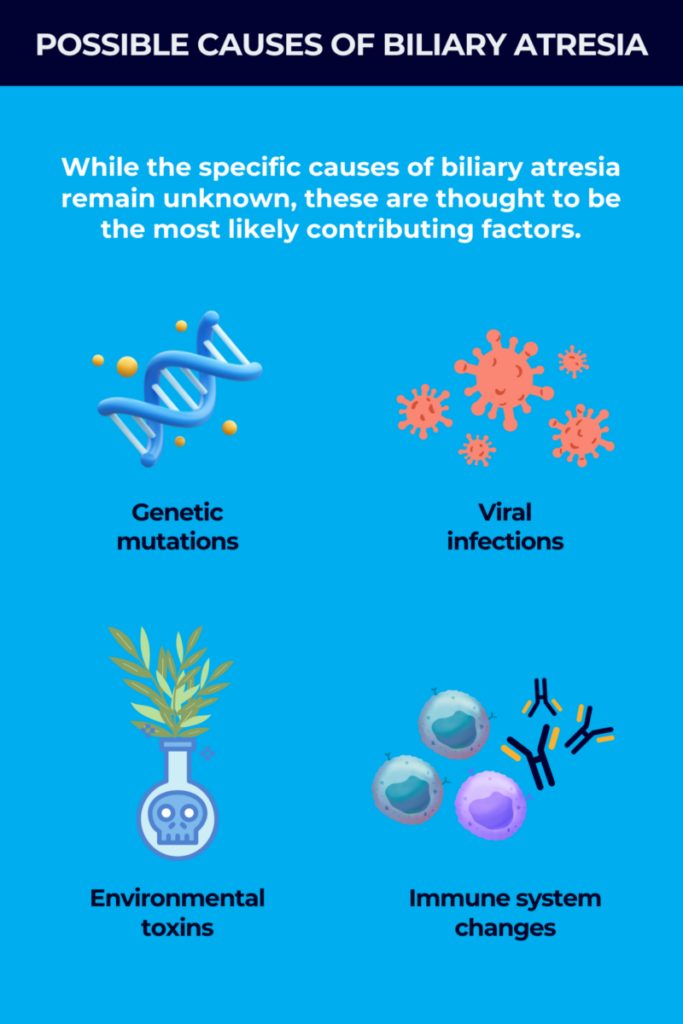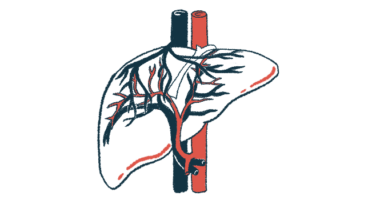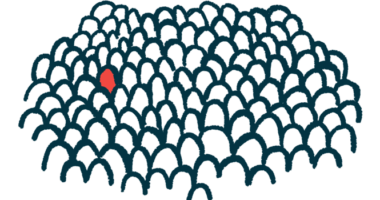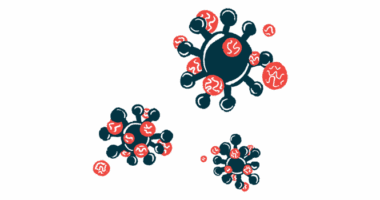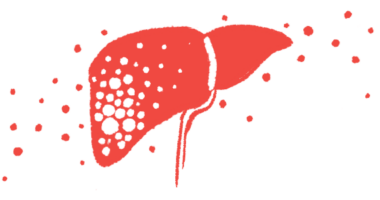Biliary atresia causes
Last updated March 3, 2025, by Lindsey Shapiro, PhD

The exact cause of biliary atresia, a rare infantile liver disease, remains unknown. Scientists are looking into the possible role of several factors, including genetics, infections, toxin exposure, and immune system abnormalities, but, to date, there is no definitive proof that any one of these factors is single-handedly responsible for causing the disease.
In biliary atresia, the series of tubes that carry the digestive fluid bile from the liver to the small intestine, known as the bile ducts, are either blocked or entirely absent. Stalled bile flow, or cholestasis, subsequently causes bile to accumulate and drive liver damage in infants. It’s believed that various triggers during pregnancy or in the first months after birth could contribute to the bile duct abnormalities that underlie biliary atresia.
Because it is not fully understood how biliary atresia develops, there is currently no way to prevent it, but a prompt diagnosis and treatment ensures that infants with the newborn liver disease have the best possible outcomes.
What causes biliary atresia?
While exactly what causes biliary atresia remains unclear, the disease is likely multifactorial. In addition, many researchers believe there may not be just one single origin of the disease, meaning that a number of different things can cause similar damage to the biliary system and drive the core biliary atresia symptoms.
Biliary atresia in newborns might happen because the bile ducts failed to develop properly during embryonic development. That’s believed to be the case for infants with congenital biliary atresia, also known as fetal biliary atresia, where symptoms are evident right at birth. These babies are often born with defects in other organs as well.
In other cases, babies may be exposed to factors that cause inflammation and scarring in the already formed bile ducts during late phases of fetal development or in the first weeks after birth. This is believed to be the case for children with perinatal biliary atresia, the most common form of the disease where babies initially appear healthy, but develop symptoms in the first weeks of life.
Scientists are still trying to unravel the specific triggers that lead to the bile duct abnormalities that mark biliary atresia. Possible biliary atresia causes include:
- genetic variants
- viral infections
- exposure to toxic substances
- problems with the immune system.
Genetic factors
Biliary atresia is generally not considered an inherited disease, meaning that it is not directly passed down from parents to their children through the inheritance of a disease-causing genetic mutation. It’s usually not seen more than once in a family.
Still, some genetic variants have been suggested to increase the risk of biliary atresia in infants. These may also include de novo mutations that spontaneously develop in sperm, egg cells, or during the early embryonic phases.
Genes implicated in biliary atresia are often associated with inflammation, biliary system development, or the generation of cilia, hair-like structures on cell surfaces that are involved in sensing and transmitting signals from the outside of the cell. In cholangiocytes, the cells that line bile ducts, cilia detect changes in bile flow and composition and transmit the information to cells, influencing their function.
Examples of genes implicated in biliary atresia include:
- ADD3
- ARF6
- GPC1
- CPLANE gene family, including AFAP1 and TUSC3
- EFEMP1.
While biliary atresia can occur in any baby, it’s seen more often in certain ethnic groups, particularly those of East Asian and African American descent. This also supports the idea that genetic factors contribute to the disease.
Importantly, no single genetic mutation has been established as a definitive cause of biliary atresia. It’s possible that genetic factors may predispose a baby to the disease, potentially interacting with environmental factors to trigger its development. Further research is still needed to know more about the role of genetics in driving biliary atresia.
Infectious and toxic factors
Research suggests that exposure to infections or environmental toxins during pregnancy or in the first days after birth can spur inflammation and damage to the biliary system.
Maternal infections during pregnancy have been linked to an increased risk of biliary atresia in offspring. There’s also evidence suggesting that biliary atresia may be caused by in utero or early life exposure to certain viruses, including:
- cytomegalovirus
- Epstein-Barr virus
- rotavirus
- reovirus.
Infections with these viruses may cause changes in the fetal immune system that lead to inflammation and biliary damage. However, much of the evidence supporting these theories come from animal studies, and studies in humans have yielded varying results. There is no specific infectious agent that is definitively established as a cause of biliary atresia.
Another possible biliary atresia cause in infants is in utero exposure to environmental toxins. For example, biliatresone, a toxin found in certain plants, is known to cause a biliary atresia-like disease in Australian sheep. While preclinical studies have supported the idea that biliatresone may cause inflammation and cholangiocyte toxicity that drive biliary atresia symptoms, there is no evidence that pregnant women could be directly exposed to biliatresone.
However, the microbial community that lives in the human gut may produce compounds similar to biliatresone by metabolizing foods like soy and beets. Still, more studies are needed to confirm a potential link between toxin exposure and biliary atresia in humans.
Immune factors
Inflammation is a key feature of biliary atresia, and patients show altered immune cell populations and inflammatory molecules. Studies suggest that various immune factors might contribute to inflammation and cause biliary atresia to develop.
One hypothesis is that exposure to viral infections, toxins, or other insults in utero or shortly after birth activate the immune system and lead to inflammation that progressively damages the bile ducts. It’s also been proposed that autoimmune reactions, where the immune system mistakenly launches an attack against healthy parts of the body, could be involved in this process.
A wide range of studies have also suggested other possible immune drivers for biliary atresia, including dysregulation of immune cell function or a failure for the immune system to fully mature.
Understanding the complex role of various components of the immune system in biliary atresia is an area of ongoing research. As with other factors hypothesized to contribute to the disease, there is no specific immune factor that’s established as a cause of biliary atresia.
Risk factors for biliary atresia
In addition to these proposed causes of biliary atresia, various factors have been associated with an increased risk of developing the rare liver disease. Biliary atresia risk factors may include:
- female sex
- maternal diabetes
- maternal drug use
- maternal infections during pregnancy
- being born to non-Hispanic Black mothers
- premature birth (before 37 weeks of gestation) or low birth weight
- being born in spring.
Because it isn’t known why biliary atresia develops, it’s also not well established how these factors might influence the risk of the disease.
Can biliary atresia be prevented?
Because the causes of biliary atresia aren’t known, there isn’t a way to prevent it or to predict which babies will develop it.
Identifying the early signs of biliary atresia and reaching the right diagnosis as soon as possible is therefore key for ensuring the best possible outcomes. The first-line biliary atresia treatment, a surgery called the Kasai procedure, is most effective when performed as early as possible.
Researchers are continuously working to better understand how and why biliary atresia occurs. In the future, this could lead to the development of new strategies for biliary atresia prevention.
Liver Disease News is strictly a news and information website about the disease. It does not provide medical advice, diagnosis or treatment. This content is not intended to be a substitute for professional medical advice, diagnosis, or treatment. Always seek the advice of your physician or other qualified health provider with any questions you may have regarding a medical condition. Never disregard professional medical advice or delay in seeking it because of something you have read on this website.
Recent Posts
- Less invasive Kasai surgery works better for infants with BA: Study
- US states, doctors split with CDC on hepatitis B shots for newborns
- PSC-IBD study shows need for regional management guidelines
- Staying on top of MASH may mean not staying on the transplant list
- Common virus may play a role in ICP development, study finds
Related articles
